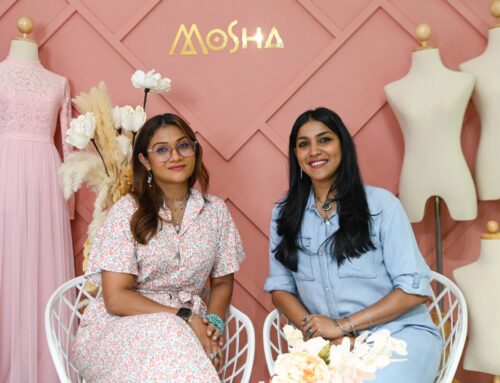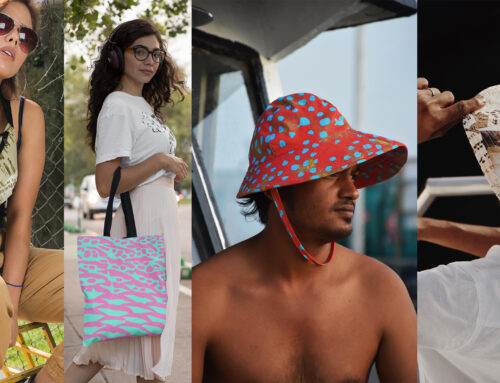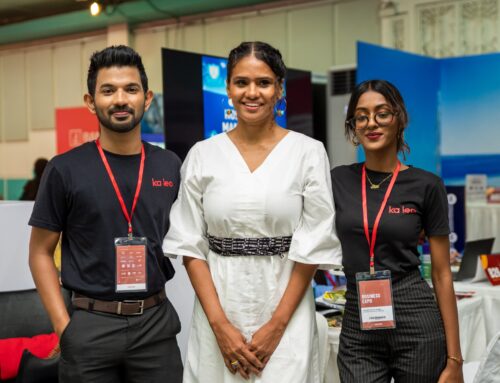Modelling 101, With Brian Kerkoven:
What comes to mind when I say the word, modelling?
Words by Axam
Let me start. I personally get that Madonna vibe, her song that’s titled ‘Vogue’. I see people who are in all conventional ways the beautiful kind, walking and posing, looking all ferocious, and then wearing the widest variety of clothes from casual stuff all the way to the most outlandish, and in some ways, out-worldly, clothes imaginable, loudly proclaiming ‘fashion!’, am I far from your assumption? If someone asks you, my casual reader, to be a model, what would you reply? Wouldn’t you do a double-take as well?

To sort of, give yourself a once-over to make sure you didn’t become six feet tall and a size zero overnight and that your entire destiny is changed without so much as a post-it note to warn you. The world of modelling and fashion has been, to most people I know at least, a sort of world within a world, detached from our everyday life, full of glitz, glamour, and poses. Where a step in the right direction needed to be made poise, with purpose, and then back again. Where everyone looked like they had the same dietician and a surprising lack of dessert for at least a few months, a torture we mistakenly presume on our part. What if I told you, there’s a lot more to this… world, than meets the eye?
It was roughly around 10:15 am one groggy Sunday morning when I first spoke to Brian. After getting the pleasantries out of the way (including the obligatory ‘oh, can you hear me? Yes, let me put on my headphones, WhatsApp audio isn’t loud enough), I jumped right into the thick of it. “Mr Brian Kerkoven, I hope that’s how we pronounce your name? Yes, alright, so first question is, how long have you been modelling?”
Well, it would be rude to calculate exactly how long ago it was when he started his career in this illusive industry, but he did start off by telling me that he didn’t start at much of a young age. He was 25 when he was first broached the subject by his hairdressers who wanted him to be one of their models for a show regarding hair they were hosting, and since he had a lot of free time (I’m assuming here), he said he gave it a shot.
And he loved it.

After this show, Brian, a Sri Lankan friend I made through my editors networking, found getting more and more opportunities to walk the ramp and model and pose, and he started getting a liking for it. 25 years of age already! We have the presumption (no? Is it just me? Okay) that modelling is only for the younger, recently legal age group, but here its proven that it didn’t matter how old you were, it only matters whether you can ‘slay’ or not (as the youngsters say these days (I am youngsters)), and Brian, as chance may have it, did slay.
I mean, he was even the first male model to be featured on the payphone card by Dialog, which was, for the younger people, a big deal back in the days before cellphones. Decades later, I was now talking to Brian Kerkoven, the head of BK Model Management (I’m sure you know what BK stands for here), who was a mentor to countless successful models in Sri Lanka, and who had been the first to actually have a model management agency in the first place. He runs a whole school now, where he teaches modelling from the ground up, and can boast successes such as mentoring the winners of multiple pageants and faces of brands. He’s the perfect person to be explaining the intricacies of this industry to the ignorant masses.
So now I started taking this conversation in a slightly different route. I wanted to know more about the industry, about what it takes, and if I could be an aspiring model with my chubby ‘family-pac’ tummy and short stature, and to be honest, I wasn’t disappointed by what I learned.
According to Brian, it’s important to see the evolution of the industry as a whole to fully appreciate the changes we are experiencing today. Back in the day, they didn’t have photoshop or the internet, so whatever skills him and his friends and competitors acquired, was through watching other models work. They had to understand why a certain pose was more suitable than another, why some models had distinct walks, how in international exhibitions the whole show was choreographed and why that made a huge impact too. “What’s the most enjoyable part of modelling?” I naively asked him, to which he replied, “The Runway.”
No, this isn’t a segment for the flight simulator fans amongst our readers. The Runway refers, in all its sassy glory, the whole stage a model walks down to show off the designs they are wearing. He told me a simple walk wasn’t enough; the runway encompassed so many elements even beyond just the models, which included the entire decoration of the venue, the presentation order of models and their designs, the music, the choreography (yes, there was more, much more, to walking than just getting from start to finish), and also the lighting they used. All of these elements are what made the runway, in his opinion, the pinnacle in the art of modelling. Of course, he added, there were a lot of different kinds of modelling, including photography, catalogue, ramp walk, etc., so one could never run out of options, but his favourite was the ramp. The sheer excitement of the whole event always got to him, as this was how he’d taught himself how to model too, by watching the work of others and learning from their mistakes and their individuality.
“So, what does it take to be a successful model?” I know my naiveness was showing, but Brian was fun company over the phone and he didn’t hesitate to answer, “Attitude. Well, of course appearances are key as well, but what sets a model apart, is their attitude. Attitude is how you walk, your expressions, your posture, everything. Attitude could even make someone of average height look tall and imposing. Attitude was what made a model unforgettable.” “So, you’re telling me, there’s a chance?” I ask, since I did not make the generalised requirement of being six feet tall, to no fault of my own. He knew this was what I was implying, so he tells me that for him, he’s got his own personal requirements as to who is more appealing to him as a model. These standards were his own, and not by any means the standards of the rest of the world, he assures me, and describes his perfect models as being “at least 5’7 for a girl and 5’10 for a boy, barefooted. They do not have to be stunningly beautiful but should have an awesome presence or attitude, in front of a camera on the runway. Be very hygienic, have well maintained skin and hair and have a pleasant personality.” I mean, at least I’ve got 5 points out of 6 I figured, but I didn’t want to confirm nor deny that.
However, I am proud to announce that for Top Model Maldives, the international Top Model organisation has allowed contestants ranging to as low as 5 foot 3 inches to participate, a rare opportunity given our nation’s average height range, so I hope this gives you hope. More on this later, let’s get back to Brian for now.
I pressed him further. “What’s the most important thing an aspiring model has to keep in mind to go far?” “Well,” he began, taking a moment to formulate his words, “I always train my models, asking them to maintain their own signature walk. Watch, admire, and learn from top models, but do NOT become a clone. Have a distinctive strut, which people, could identify you by.”
Practicing is something I am familiar with, being a musician myself, but it never occurred to me models needed to keep practicing and training to be better at what they do too. I always thought it came naturally to them, and when I mentioned this, Brian told me about his students, some of them who started off not at all looking like what a model is perceived to be like, but had transformed both their bodies and the way carried themselves, all the way into pageants and advertisements and fame and beyond. He said it was very important to have a good trainer, someone who has an eye for modelling and could tell you what to improve, what to change, and what aspects to keep and amplify, but it was also important to know those things for yourself. Models needed to be able to learn from their own walks and postures, to improve on them, and this sort of self-evaluation is a key part of his curriculum as well.
“How do you judge who’s the best in a competition?”
For this question, he said the answer’s been evolving in time. Back then, a good walk, a striking pose, and conforming to the generic values of beauty was all that was needed in the mainstream, but now a lot of attention is paid to the model’s intelligence as well. In Sri Lankan competitions, he said, they start off with a prejudging stage, where the model is asked to present themselves in the rawest form, without the fancy lights and the makeup and the photoshop. This is where they are asked, but not required to, to participate in the swimsuit category, where the judges can see just exactly how well they’ve maintained their bodies, whether or not a lot of covering up has been done on scars and marks and etc., but the important takeaway is that these aspects aren’t exactly taking or giving points. This is for the judge’s awareness, and during this prejudging, the models will be asked questions, and its actually the answers that usually make it or break it for the rest of the competition.
One very important thing, is how each pageant nowadays follows certain humanitarian efforts, so before one participates, it’s important to actually have done some work in that field before competing. This obviously didn’t apply for the entire industry, but Brian mentioned that this sort of attitude-built character, and also added to the branding of each model too. I noted that away for later, of course.
When I asked him what’s changing right now, I could almost hear him smile over the phone.
Now, he says, anybody can be a model. Values are changing, from being consumer centric to being more inclusive, where all body shapes and sizes are welcome, where there are models in wheelchairs all the way to models with certain learning difficulties, models of all walks of life, all who are getting exposure and recognition in this highly globalised world. “Right now, I say the sky’s the limit. We are now able to accept everything, all the differences between us, and coming to realise that who are we to set a criteria on who can be a model, right?” he wrapped up succinctly. I couldn’t help but smile.
From what he said, I could almost see myself in this industry too, given a chance to fit into the niche that suites me best, to find in myself the courage to be unapologetically myself. Through my nearly an hour-long conversation, I have gone from someone who thought modelling was just for someone else, to realising how this industry was an opportunity for so many people. Such a world of work, learning, achieving, and fame that we all have a chance to participate in. A world where now people are celebrated for who they are, and their ability in showing that through the bright floodlights and loud music.
As I thanked him for his time, he cheekily asked me, “You’re asking all these questions so that you can give your wife some tips, right?” I had mentioned to him my beautiful wife Vicky was also an aspiring model, and his aspirations weren’t too far off. “Not really,” I started, telling him that being married to a promising, hardworking model gave me a very unique insight into the sort of questions that haven’t been asked before, and the way to bridge the gap between the modelling industry and the common people. This gave me an idea.

“Brian, what about how all those self-proclaimed Instagram models and Tiktok performers getting advertising jobs all of a sudden, how does a model deal with that?”
He told me that sometimes, when modelling and the advertising industry coincides, the client would want a face that everyone knows and sometimes this works against the whole concept of modelling in his opinion. But he didn’t sound disheartened, “What I tell my students when they feel hopeless in competing against internet fame, is not to beat them, but join them!” So yes, I advise my fellow aspiring models (just kidding, I haven’t changed my career path yet), don’t lose heart. You too, can be as inspirational as an influencer, and who knows? Discovering this side of you might help you with branding yourself too?









Leave A Comment